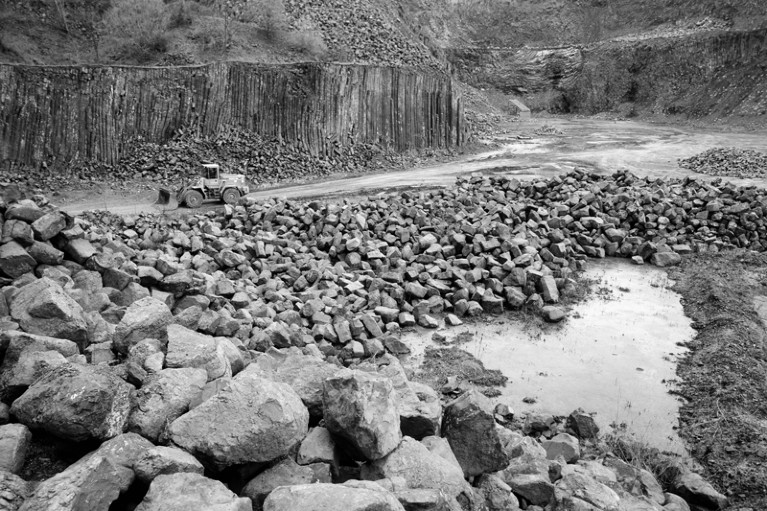
Spreading basalt rock on farmland has been suggested as a way to soak up carbon pollution from the atmosphere.Credit: Hartmut Schmidt/imageBROKER/Alamy
Decarbonization of the world’s economy would bring colossal disruption of the status quo. It’s a desire to avoid that change — political, financial and otherwise — that drives many of the climate sceptics. Still, as this journal has noted numerous times, it’s clear that many policymakers who argue that emissions must be curbed, and fast, don’t seem to appreciate the scale of what’s required.
According to the Intergovernmental Panel on Climate Change (IPCC), carbon emissions must peak in the next couple of decades and then fall steeply for the world to avoid a 2 °C rise. A peak in emissions seems possible given that the annual rise in carbon pollution stalled between 2014 and 2016, but it’s the projected decline that gives climate scientists nightmares.
The 2015 Paris agreement gave politicians an answer: negative emissions. Technology to reduce the amount of carbon already in the atmosphere will buy society valuable time. The agreement went as far as arguing that incorporating one such technology — bioenergy with carbon capture and storage (BECCS) — could even see the global temperature increase kept to 1.5 °C.
What would negative emissions look like? A Perspective this week in Nature Plants offers another glimpse, and it’s not pretty (D. J. Beerling et al. Nature Plants http://dx.doi.org/10.1038/s41477-018-0108-y; 2018). The review focuses on the idea of enhanced weathering, which aims to exploit how many rocks react with carbon dioxide and water to form alkaline solutions that, over time, find their way into the sea. It’s one of a number of proposed negative-emissions technologies.
In theory, enhanced weathering could lock up significant amounts of atmospheric carbon in the deep ocean. But the effort required is astounding. The article estimates that grinding up 10–50 tonnes of basalt rock and applying it to each of some 70 million hectares — an area about the size of Texas — of US agricultural land every year would soak up 13% of the annual global emissions from agriculture. That still leaves an awful lot of carbon up there, even after all the quarrying, grinding, transporting and spreading.
It’s not hard to see why many climate scientists have dismissed the near-impossible scale of required negative emissions as “magical thinking”. Or why the European Academies’ Science Advisory Council said in a report this month: “Negative emission technologies may have a useful role to play but, on the basis of current information, not at the levels required to compensate for inadequate mitigation measures.”
The IPCC is now working on a report on strategies to keep warming to under 1.5 °C, which is due to be published later this year. By necessity, those strategies will lean heavily on negative emissions. Scientists must continue to spell out to policymakers the harsh reality of what this would involve, and in the strongest possible terms.

 Is the 2 °C world a fantasy?
Is the 2 °C world a fantasy?


